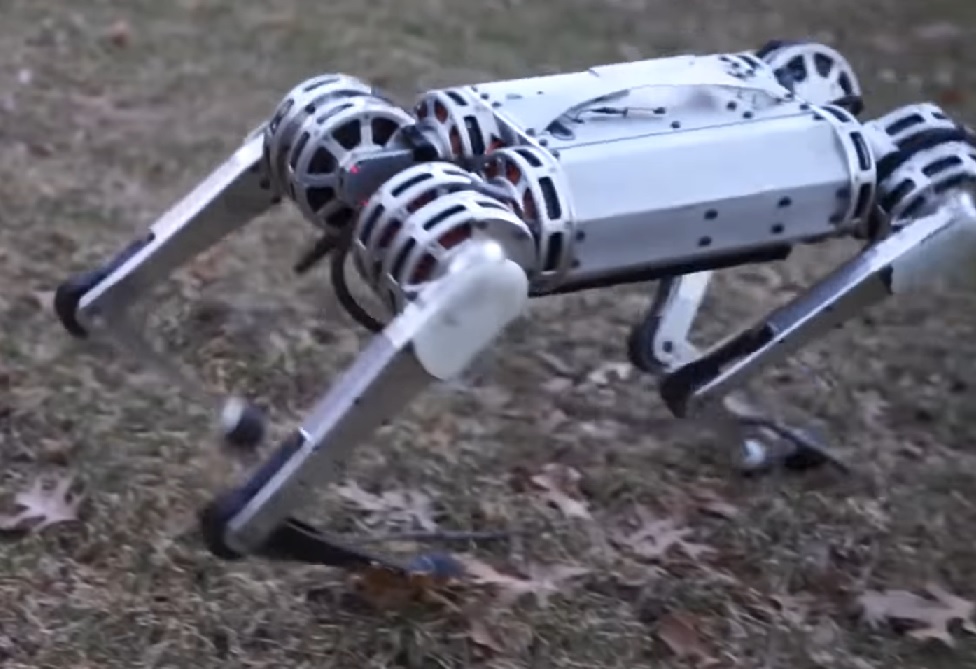This post is also available in:
 עברית (Hebrew)
עברית (Hebrew)
A new robot developed by MIT students may serve as a testing robot for developers. Will it also be able to perform security missions?
The new Mini Cheetah robot is the first four-legged robot to do a backflip. The quadruped robot can bend and swing its legs wide, enabling it to walk either right side up or upside down. Weighing in at just 20 pounds, the robot can also trot over uneven terrain about twice as fast as an average person’s walking speed.
Moreover, when kicked to the ground, the robot can quickly right itself with a swift, kung-fu-like swing of its elbows.
Perhaps most impressive is its ability to perform a 360-degree backflip from a standing position.
According to news.mit.edu, the mini cheetah is more than just a miniature version of its predecessor, Cheetah 3, a large, heavy, formidable robot, which often needs to be stabilized with tethers to protect its expensive, custom-designed parts.
“In Cheetah 3, everything is super integrated, so if you want to change something, you have to do a ton of redesign,” the lead developer Benjamin Katz says. “Whereas with the mini cheetah, if you wanted to add another arm, you could just add three or four more of these modular motors.”
Katz and this team came up with the electric motor design by reconfiguring the parts to small, commercially available motors normally used in drones and remote-controlled airplanes.
Each leg is powered by three motors, to give it three degrees of freedom and a huge range of motion. The lightweight, high-torque, low-inertia design enables the robot to execute fast, dynamic maneuvers and make high-force impacts on the ground without breaking gearboxes or limbs.
MIT’s Mini Cheetah robot is very similar to Boston Dynamics’ Spot, a robot which can handle rough terrain and features remote control and autonomy capabilities. The ability to deploy advanced video analytics, perform scheduled patrols, and more make systems such as surveillance drones and security robots enticing. Boston Dynamics is already selling Spot for use in monitoring construction sites, oil and power installations, etc.
“Say you wanted to throw the robot into the window of a building and have it go explore inside the building. You could do that,” says Katz. The robots are modular, meaning if a limb or motor were to break, it can easily be replaced.
The team is building about 10 more mini cheetahs, each of which they plan to loan out to collaborating groups, and intends to form a mini cheetah research consortium of engineers, who can invent, swap, and even compete with new ideas. Loaning mini cheetahs out to other research groups gives engineers an opportunity to test out novel algorithms and maneuvers on a highly dynamic robot, that they might not otherwise have access to.
Meanwhile, the MIT team is developing another, even higher-impact maneuver.
“We’re working now on a landing controller, the idea being that I want to be able to pick up the robot and toss it, and just have it land on its feet,” Katz says.


























